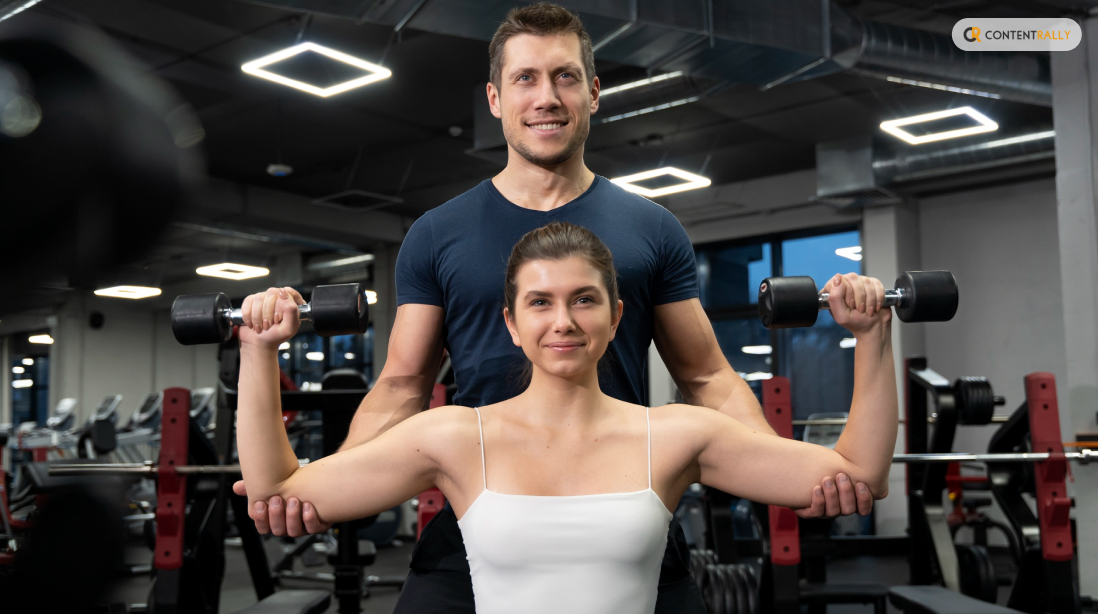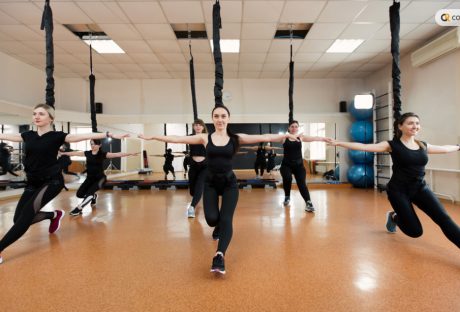It is important to exercise and stay in shape if you are on a fitness journey. However, if you are on a busy schedule, you might think about how many exercises per workout you must do to be efficient. This is a question that is important to both an amateur and an advanced individual who is looking for a good workout schedule.
In this article, you will learn about how to make a workout schedule based on your needs and demands. Hence, this article will primarily answer the question, “How many exercises per workout must you do?” Apart from that, you will also learn about various factors that influence the number of exercises.
How Many Exercises Per Workout You Must Do?
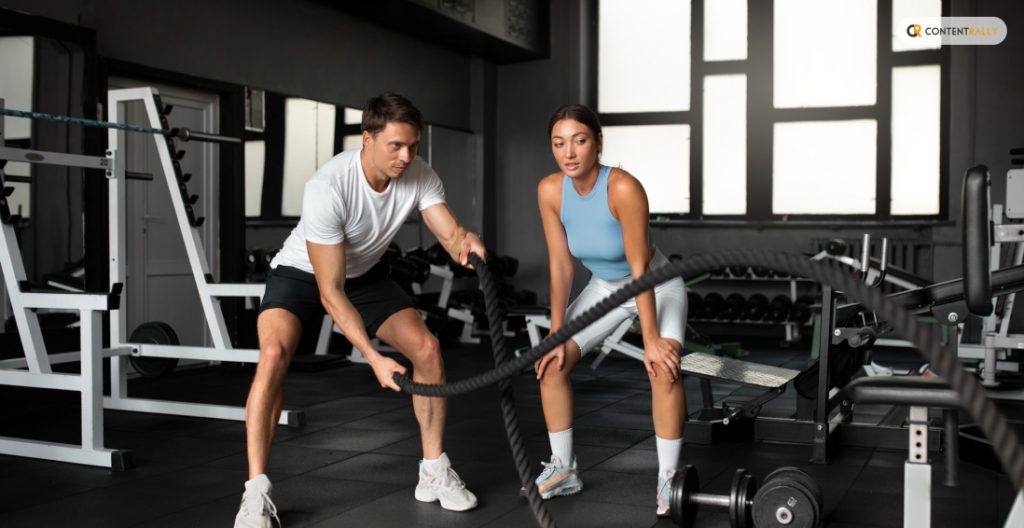
When you ask, “How many exercises per workout must you do?” – the direct answer is three to five exercises for a group of muscles. For instance, if you are working out your leg muscles, you must not do more than three to five exercises in a day.
Although it is the general guidance for most people, it is important to learn why this is the case. This is because the number of exercises in your case depends on your needs and demands. When you target a muscle group, you can be effective with your exercises. Also, you will not end up overwhelming or overtraining yourself.
Basically, when you have a better idea of how many workouts you must do while you exercise, you can plan your fitness goals easily. Also, a low but effective number of exercises in a workout will help you track your results better.
However, if you are a beginner, you can start with two exercises for each muscle group. For example, to hit your chest muscles, you can start with bench presses and push-ups. On the other hand, you can start training your triceps with diamond push-ups and tricep push-downs.
Factors Influencing the Number of Exercises
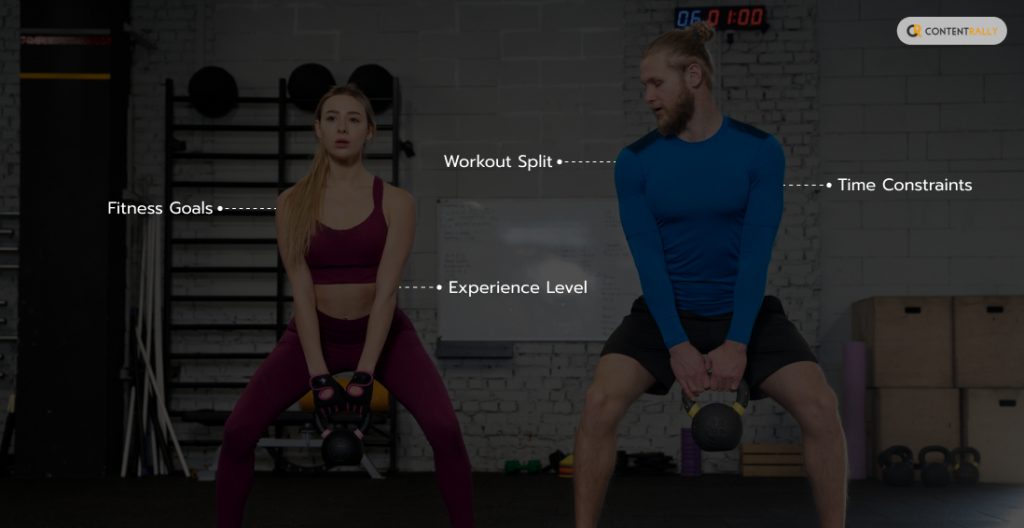
There are many factors that influence the number of exercises you need to do in a workout. Generally, these include a combination of personal preferences and how you design your training program:
1. Fitness Goals
As a beginner, you can start with simpler and fewer exercises. However, for advanced individuals, fitness goals fall into one of these categories: Strength vs. endurance vs. hypertrophy (muscle growth).
a. Strength Training (Rep range: 2-6)
Here, your focus is on lifting heavy weights, and your repetitions are low. This helps you to activate your muscle growth and helps to force production. Basically, this technique is common among powerlifters.
b. Endurance Training (Rep range: 6-12)
Endurance is your muscle’s ability to perform activities for long periods of time. To increase your muscle endurance, you must do lighter weights with high repetitions. This is a good idea for someone who wants to be more athletic.
c. Hypertrophy Training (Rep range: 15+)
Here, your goal is to increase the size of your muscles. Hence, you train with moderate weights with moderate repetitions. Generally, this is common among bodybuilders.
2. Experience Level
In fact, when you have a good experience with weights, you can perform a higher number of exercises per session. This is because individuals with more experience have the ability to handle higher-intensity workouts.
Also, they can handle higher volume because their muscles are developed. Apart from that, they have enough knowledge about technique, and they have higher endurance. Hence, they can incorporate more exercises into their workout routine.
As you gain more experience, your muscles become strong and resilient. Hence, it can handle a higher repetition count with each set. On the other hand, if you do regular exercises, you have better aerobic capacity, which is a higher level of fitness. Hence, you can perform more exercises with less fatigue.
3. Time Constraints
With more time constraints, you can significantly decrease the number of exercises you do in a session. This is because when you have a time limit, it will restrict the amount of time you dedicate to exercise. Hence, many individuals choose to dedicate less time to workouts when they have busy schedules.
Basically, time constraints are a major barrier for many when it comes to regular exercise. This prevents you from engaging in physical activities that you might like. Moreover, this also influences the type of exercise that you choose to perform. Hence, you select those activities that you can do in shorter timeframes. For example, high-intensity interval training.
4. Workout Split
With workout splits, you can focus on fewer muscle groups in a single day. This enables you to perform higher-volume exercises to target specific muscles of your body. In fact, with a split routine, you can do a higher number of exercises for each muscle group in one week. Apart from that, a workout split will also help you in faster recovery.
Moreover, with a split outline, you can also perform a higher number of sets and reps for every muscle group that you target. This is because you are using more exercises to target a muscle group.
Also, workout splits allow for more number of rest days between your training sessions. Hence, there is a better chance for recovery, and you can also prevent overtraining.
Guidelines for Number of Exercises Based on Goals
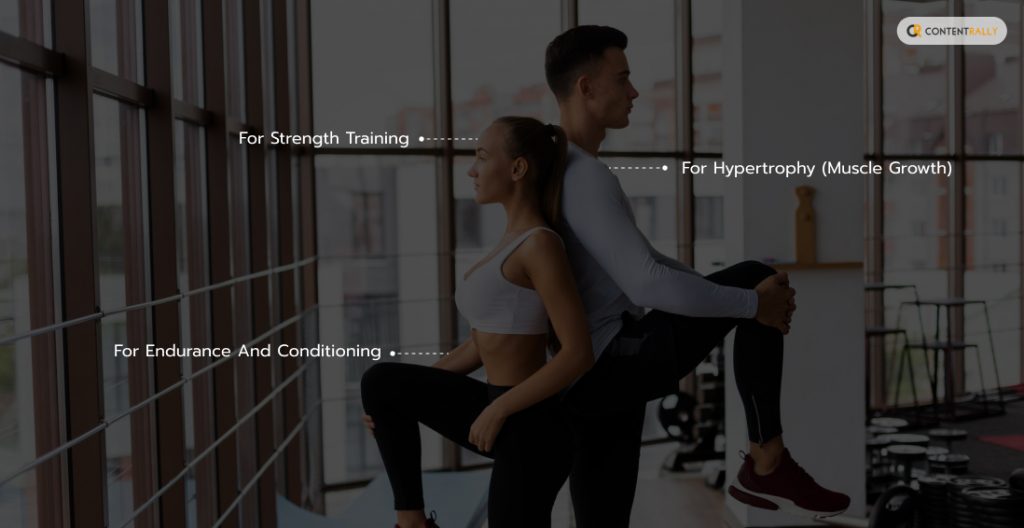
No matter what exercise you choose to do, it is important to focus on proper form. Apart from that, you must also ensure adequate recovery time. The following are a few guidelines you can consider if you want to consider how many exercises per workout you must follow:
1. For Strength Training
If you want to gain strength with your workouts, you must focus on compound lifts (e.g., squats, deadlifts, bench presses). Basically, you have to lift heavy weights with low repetitions. This will increase your maximal strength.
Here, the rep range is 2-6 reps per set. Also, you must stick to 3–5 exercises per workout. Additionally, you must ensure longer rest periods between your sets. This will help you to recover faster.
2. For Hypertrophy (Muscle Growth)
In hypertrophy, the focus is to lift moderate weights with higher repetitions. This will help you to maximize muscle growth. Here, the rep range is 8-12 reps per set. Also, you must stick to 5–7 exercises per workout.
Some examples of hypertrophy include bicep curls, shoulder lateral raises, leg extensions, chest flies, etc.
3. For Endurance and Conditioning
Here, the emphasis is on functional movements and higher repetitions. Basically, you have to perform exercises for longer time periods and also at a moderate intensity. This will increase your cardiovascular health and stamina.
Here, the rep range is high, and there are fewer rest periods between sets. Also, you have to perform 4–6 exercises per workout. In fact, the rest periods are fewer to ensure your heart rate stays at a higher level.
Some examples of endurance and conditioning training include running, cycling, swimming, jumping jacks, burpees, etc.
Factors to Consider While Structuring a Workout

Here are a few factors you must consider while you structure your workout routine:
- Your workout routine depends on your lifestyle, schedule, and physical activities. Apart from that, it also depends on your current strength and size.
- Without specific goals, you cannot structure your workout routine. Basically, you have to find the best ways to chalk out your goals.
- Make sure that there are enough rest and recovery periods between two training sessions. This will help in muscle growth, and will not overstrain your muscles.
Structure Your Workout Now
How many exercises per workout? – Now you know that it is better to have 3 to 5 workouts in a single training session. Apart from that, you also need enough rest and recovery time between two consecutive training sessions. However, if you are performing endurance and conditioning, the recovery periods will be fewer.
Do you have more suggestions on how to structure your workout routine? Please share your ideas and opinions in the comments section below.
Read Also:













